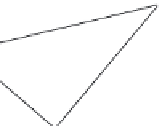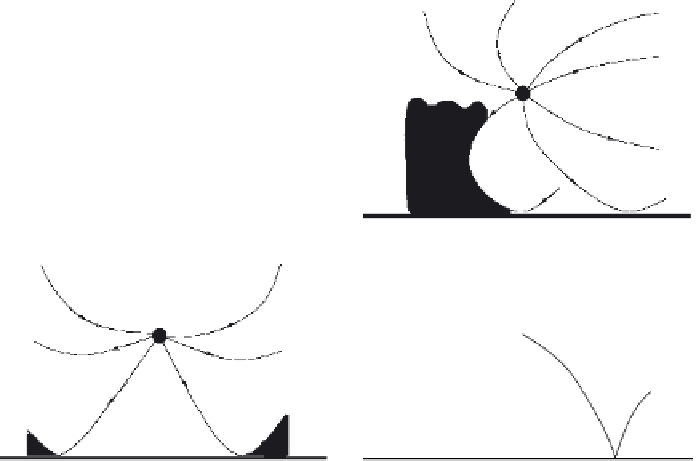Environmental Engineering Reference
In-Depth Information
(a)
(b)
(c) (d)
Figure 10: The infl uence of vertical temperature gradient and wind speed on noise
propagation: (a) no wind, no temperature gradient; (b) wind from left
to right, no temperature gradient; (c) no wind, negative temperature
gradient; (d) no wind, positive temperature gradient.
The infl uences of the last two parameters are visualized in Fig. 10. If there
would be no wind and no temperature gradients, the sound waves would propa-
gate along straight lines (Fig. 10a). In windy conditions the noise propagation
paths are curved towards the wind direction (Fig. 10b). Negative temperature
gradients cause lower temperature regions at higher altitude, thus lower propa-
gation speeds for the noise. As a result, the noise propagation paths will be
curved upwards (Fig. 10c) (the opposite effect happening for positive pressure
gradients, Fig. 10d). One can observe in Fig. 10 that in certain conditions shadow
zones appear where the noise will not propagate.
Compared to other industrial noise sources, wind turbines have two main spe-
cial features [5]. First, the sources are located at an elevated level which leads to
reduced screening and ground attenuation effects. Secondly, in windy conditions
sound propagation is diffi cult to predict.
4.3 Immission
There are several factors infl uencing the level of annoyance from wind turbine
noise [6]. Both the odds of perceiving the wind turbine noise and the odds of being
annoyed by wind turbine noise increases with increasing sound pressure level [10].
Pedersen and Larsman [11] showed that the visual impact is important when wind
































Search WWH ::

Custom Search